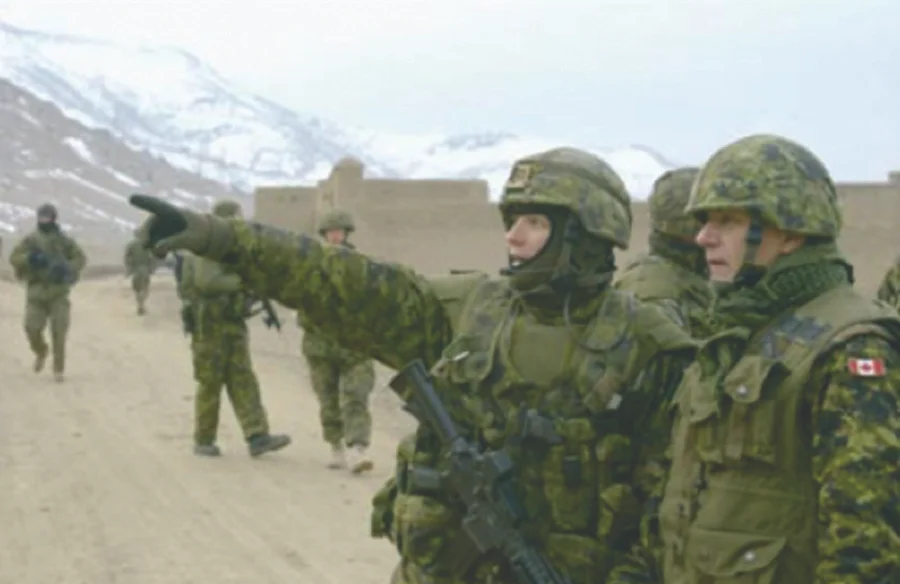(Volume 25-06)
By Sean Henry
In the June issue, (Vol. 25, Issue 5), Colonel (Ret’d) Pat Stogran discusses Canadian defence policy in the context of peacekeeping operations in the new world of digitization, social media and asymmetrical threats. His analysis is valid, but it is suggested that larger issues are involved beyond peacekeeping, and they need to be addressed first.
Those who understand the evolution of Canadian defence policy, and the state of the Canadian Armed Forces, know that the situation has been unsatisfactory since the early 1970s. In fact it is a mess (too few people and equipment shortfalls). Only the sacrifices of serving members prevents major crises. Despite the optimistic outlook presented in the recent Strong/Secure/Engaged document the situation is unlikely to improve in the near future.
There are a number of negative forces impacting defence matters in Canada, and until they are removed improvements will be sparse – thus corroding the security and well-being of the nation and its ability to advance in a world facing daunting change. The factors emerge from historic trends: anti-military sentiment embedded in the public consciousness; ongoing action to exploit that sentiment by pacifist interests; the “demilitarization” of the armed forces fostered by policies emerging from government reorganization initiatives in the 1970s.
Anti-military sentiment was unleashed in the aftermath of the horror of World War I. A movement known as “liberal internationalism” spread throughout the Western world. Its precepts are based on the concept that it is morally wrong and should be illegal to employ military force in the conduct of international relations. In Canada it was embraced by an emerging class of powerful federal civil servants. The “Ottawa Men.”
Anti-military tendencies were reinforced in the 1960s by fallout from the war in Vietnam. Canadian youth thought it was stylish to support their peers in the US, while draft dodgers from the latter joined Canadian universities, media outlets and arts organizations to give the movement a boost. Peace activists joined the fray after the election of an apparent ally, Pierre Trudeau, as prime minister. They were funded and trained by the Soviets to exploit a perceived weak link in NATO.
In 1943 C.D. Howe, the Minister of Munitions and Supply had authorized the (then) three ministers of defence to bypass government regulations in order to win the war. Scandalized senior civil servants vowed to have the policy rescinded. It took them thirty years, but in 1973 they succeeded. From several government reorganization schemes a new policy defined DND as “just another government department” and classified members of the armed forces as civil servants in uniform. The policy was implemented through Treasury Board Directives and other Central Agency regulations.
The policy denies that in spite of unlimited liability related to duty, including death, inherent in military service, it is not relevant in matters of government operations. This outlook is driven by self-interest in the realms of power and money on the part of the bureaucrats. Joined by the older factors of anti-military sentiment, it has been a dominant driver in the ongoing decay of the Canadian Armed Forces. It is at the heart of problems ranging from veterans benefits to stalled procurement projects. Most importantly, it is responsible for up to one quarter of the DND budget being spent on projects that have no military utility.
Finally, these trends are linked to Canadian public reluctance to accept death in defence of national interests. Historically this tendency has been a symptom of the decline and fall of societies. It is so entrenched in Canadian government’s thinking that even peacekeeping is avoided or restricted if there is a risk of casualties.
The public must be convinced its vital interests are at stake, and political pressure needs to be applied to the prime minister to take strong action to rehabilitate the armed forces.
Unfortunately, Justin Trudeau and his ministers do not seem inclined to do this. Their original policy was to restructure the CAF to be “light and agile,” focused mainly on national and North American security issues. Overseas commitments would be limited to peacekeeping. Proposals for improved forces, that emerged in the Strong/Secure/Engaged document, are being diluted, and will likely disappear if President Trump fails to be re-elected.
Pro-defence actors need to close ranks and co-operate to produce public information programs (well beyond academic treatises) using all modern digital means (see Ford’s success in recent ON election) to convince the public that reasonably sufficient armed forces are critical to preserve and advance the well-being of Canadians. The focus needs to be upon defeating enemies, such as Islamist radicals and renegade powers determined to acquire nuclear capabilities. Canada has a special interest in removing threats to international stability since they weaken the process of international trade. Canadians live or die on the success of international trade.
Justin Trudeau has already demonstrated that he will not commit Canadian military forces to combat operations overseas. In this respect he follows his father’s example and thus weakens Canada’s ability to defend itself and influence international affairs. W


